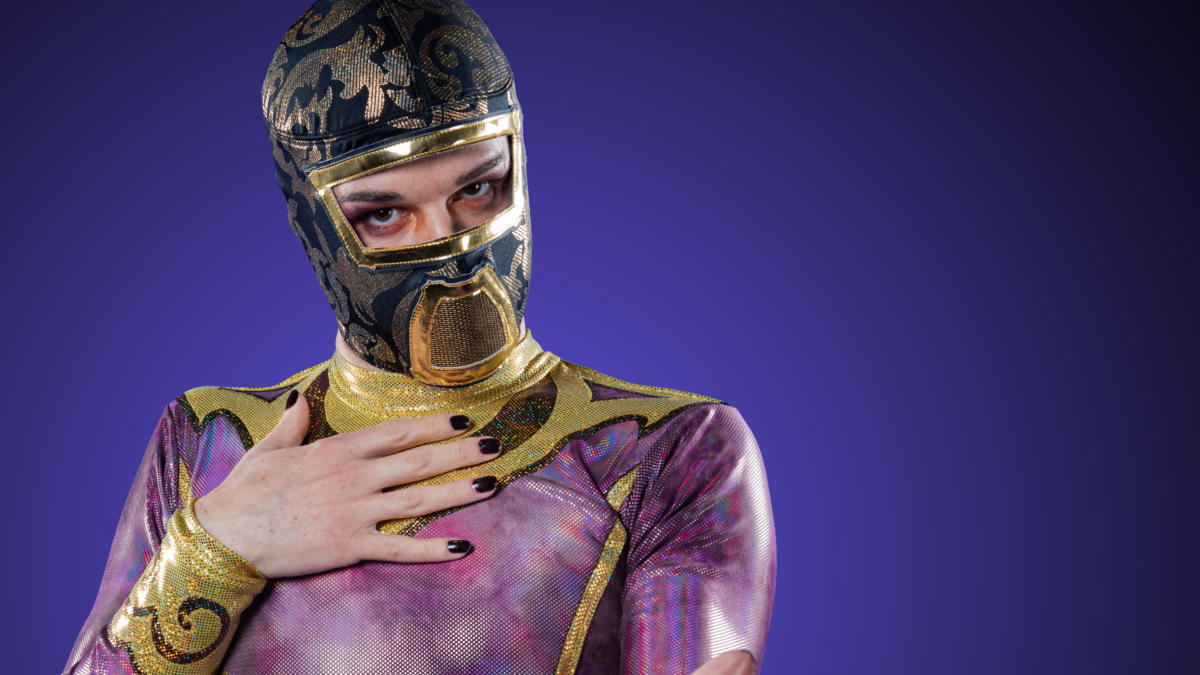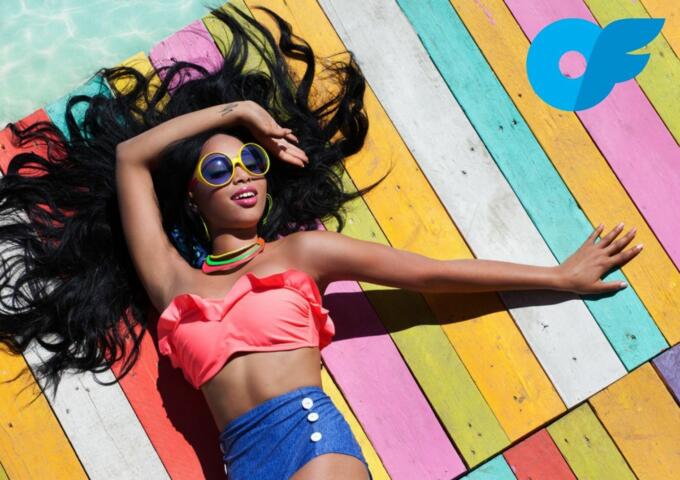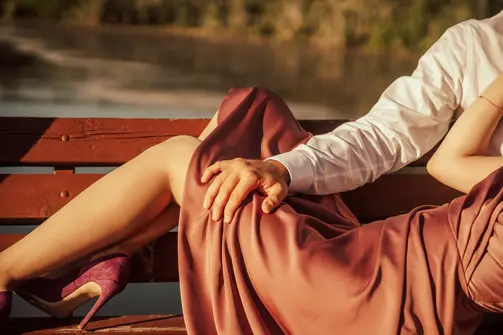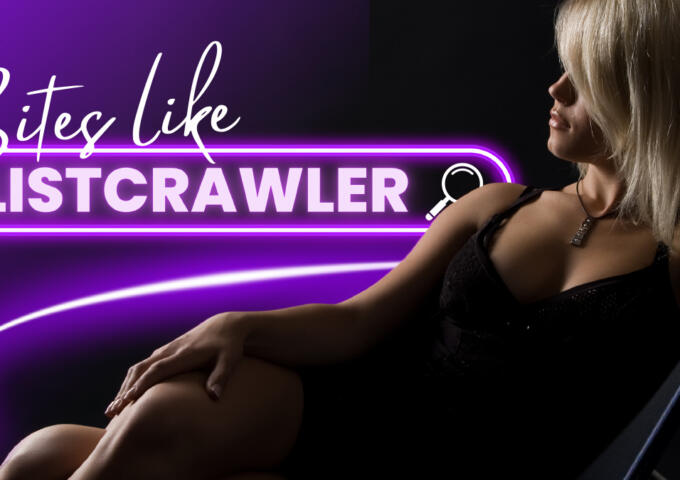How queer is professional wrestling?
“Have you seen it!? It’s a bunch of oiled-up muscle men rolling around in their underwear,” replies Still Life with Apricots and Pears, the first openly non-binary professional wrestling champion. “For me it’s always been an expression of queerness. And it was difficult/confusing growing up watching mainstream wrestling, which had a lot of homophobic and transphobic storylines.”
Despite the regressive stereotypes of wrestling fans, Still Life says that the audience’s reaction to them coming out has been “great! The majority of the response has been super positive.”
“There was some confusion I saw on social media,” explained the Art Museum area resident, “But it was remarkable to see other fans educating each other on gender variations and expressions.”
To help educate wrestling fans about gender identity and to raise awareness of the importance of pronouns, Still Life was invited on “Til We Make It,” an online series about wrestling hosted by Mike Quackenbush, founder of both the Wrestle Factory and Chikara Wrestling, based in Philadelphia. The comments below the interview are shockingly supportive for a YouTube video.
It was a moment of beautiful synchronicity, as it had been Quackenbush who had inspired Still Life to pursue their lifelong interest in wrestling in a talk he gave at Ignite Philly in 2015.
Quackenbush had preached, “I think pro wrestling is the most misunderstood form of entertainment on the planet, and I also think it’s the most fascinating and wonderful form of performance art you can ever hope to experience.”
Quackenbush didn’t hold back from acknowledging professional wrestling is art and “not a legitimate sport,” saying, “It is colorful costumes, it is superhuman feats of strength and agility, it’s heroes and villains, comedy and tragedy and larger than life power,” adding, “For too long the pervading belief in professional wrestling is that we could not come clean, that we could not be frank with our audience about what we are.”
“He invited me and a few friends to the Intro to Professional Wrestling Workshop at the Wrestle Factory,” says Still Life, “I was hooked immediately and restricted my whole life to become a professional wrestler.”
Initially, they say, “I was an awful wrestler. My matches were embarrassing.”
“For me [wrestling has] always been an expression of queerness. And it was difficult/confusing growing up watching mainstream wrestling, which had a lot of homophobic and transphobic storylines.”
– Genderqueer professional wrestler, Still Life with Apricots and Pears
After training for two years, they say they felt “very directionless.” That’s until a fellow wrestler, BLANK, made a proposition. “He wanted a few students to turn into art pieces. So he came up with the name of Still Life with Apricots and Pears and I filled in the rest.”
Over time, Still Life continued to work, eventually winning the Young Lions Cup tournament in 2019, reportedly making them the first openly non-binary champion in pro wrestling history. That victory “put a ton of pressure on me and somehow I managed to put together three successful performances in one day. Every match got better and better from there.”
Beyond the skills of wrestling and live performance, “The Still Life character has given me a platform for discovering my own gender and how I express myself,” says the wrestler.
One component was their perception of their own body. “Mainstream wrestlers are often bodybuilders, and that perception is somewhat true on the independent level.” Initially attempting to fit that mold, Still Life got a personal trainer, adjusted their diet, took weight gainers and tried to bulk up.
“But it didn’t feel good once I started to put on muscle. It made me realize that I didn’t want my body to look like that. I liked my slender body and I didn’t want a traditionally masculine body. I’m happy with my body now and it’s part of my presentation.”
Still Life was also inspired to expand and highlight other facets of themself. “Generally, wrestling is described as your personality turned up to 11. And often that presented itself as hyper-masculine or hyper-feminine. A lot of characters who expressed a coded gender were generally nefarious.”
To say that professional wrestling has a complicated history with gender and sexuality is an understatement and a half.

Women wrestlers have worked for a century to be taken seriously as stars and not just trophies, bimbo sidekicks, and damsels in distress. Even still, Money.com reports that women wrestlers are paid a fraction of their male counterparts, as is the case with most sports and art forms.
As for queerness in wrestling, the situation has been arguably even more difficult. Pat Patterson, the first openly gay pro wrestler, came out in the 1970s, but this was not acknowledged in WWE storylines until 2014.
A handful of characters have flirted with homosexuality and androgyny as a gimmick. Overly affectionate ring partners Billy and Chuck played a matchy-matchy ambiguously gay couple who went so far as to propose marriage and schedule a wedding for an event on September 12, 2002, that was promoted by anti-defamation organization GLAAD. The wrestlers balked last minute during the ceremony, revealing the act had gone too far even for them.
Other times queerness has been played as villainy, with flirting and sexual harassment of opponents as a tactic of battle. Perhaps most famous is Goldust, portrayed by Dustin Runnels, son of famed wrestler Dusty Rhodes.
In an effort to carve a path distinct from his father, he accepted a pitch to portray a weird, kinky character whose androgyny would be used to confuse opponents. He was a popular and controversial figure who some critics say capitalized on the gay panic of the 1990s.
Interest in Goldust eventually waned, and Runnels reportedly suggested he get breast implants in real life to revive the character and his career.
“When I first started, I was a heel/rudo. I wrestled viciously. But I modified my style after I started to realize how important it was to be a positive representation for the queer, non-binary and trans community.”
– Still Life with Apricots and Pears, the first openly non-binary professional wrestling champion.
“When I first started, I was a heel/rudo. I wrestled viciously,” says Still Life. “But I modified my style after I started to realize how important it was to be a positive representation for the queer, non-binary and trans community.”
“That feeling is reinforced every time I get to interact directly with fans. Often, they share their stories with me or even come out to me. It’s always moving and humbling,” they say, adding, “I hope to inspire people to explore their gender, or explore a passion they felt locked out of.”
Representation is getting better in wrestling. After much online backlash, World Wrestling Entertainment (WWE) began to showcase its women performers’ talents more in the last five years: introducing two of their three current women’s championships, including women in longer matches, giving them more nuanced storylines, and changing their name from “Divas” to “Superstars,” the same title given to male performers.
In 2018, the women’s roster got its own pay-per-view event, and in 2019 the first openly transgender person was signed to a major promoter when Nyla Rose joined All Elite Wrestling (AEW).
Much more progress is visible on the more independent level of wrestling. “There are a lot of queer-focused events,” says Still Life, citing “Primetime Pro Wrestling’s Butch vs. Gore a few months ago in Washington D.C., or Effy’s Big Gay Brunch that was supposed to happen in Tampa Florida a few weeks ago.”
“There is still a lot of work to be done. A lot of promoters don’t understand how to book queer talent. Sometimes it’s viewed as a gimmick,” Still Life says, adding “Promoters have told me before that they can’t book me because the ‘non-binary would be over the audience’s heads.’”
But Still Life is optimistic and believes wrestling is for people of all demographics. “Our common love for wrestling conquers any kind of difference we may have. And there are so many things that happen in wrestling that other people can relate to,” they say, adding, “My friends and family cannot understand why I would drive 13 hours to Chicago, wrestle a 10-minute match and drive straight home. But anyone in my wrestling family would do the same thing, every weekend.”
Follow Still Life on Twitter and Instagram: @apricotspears.





